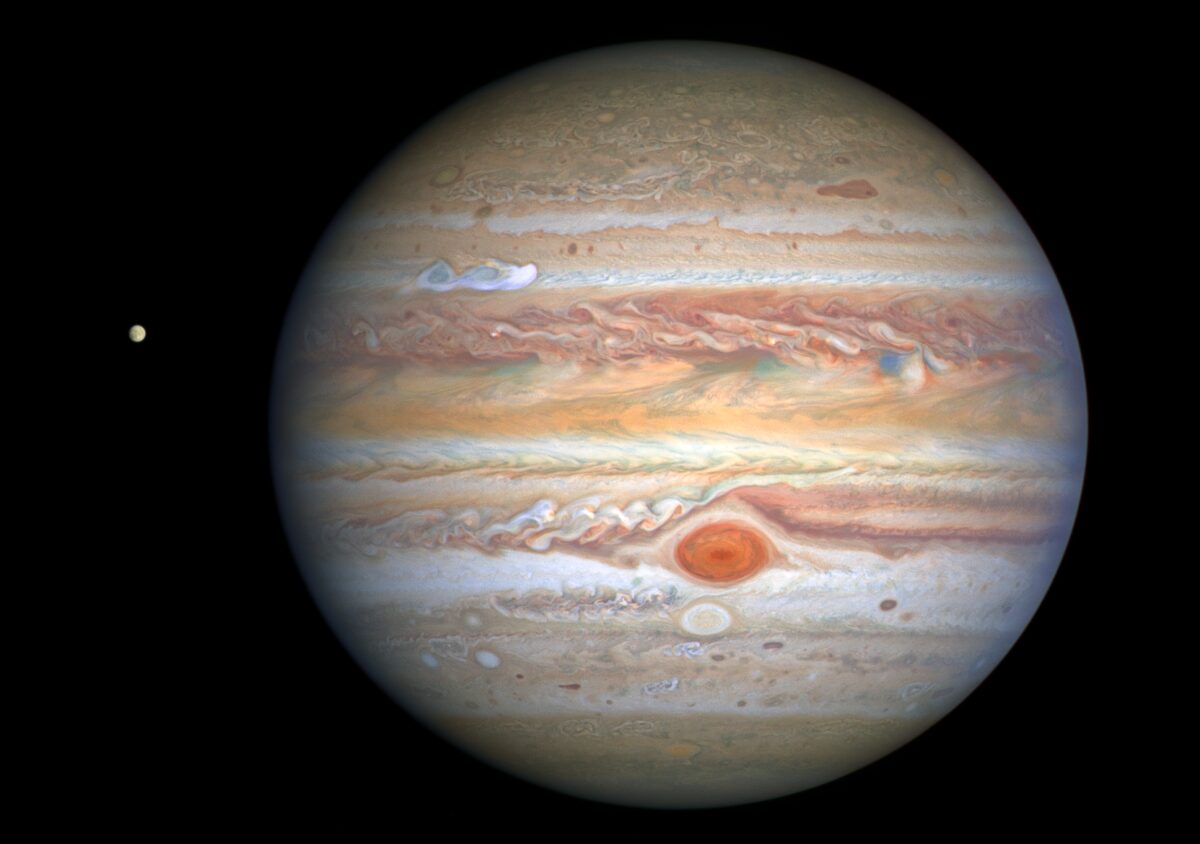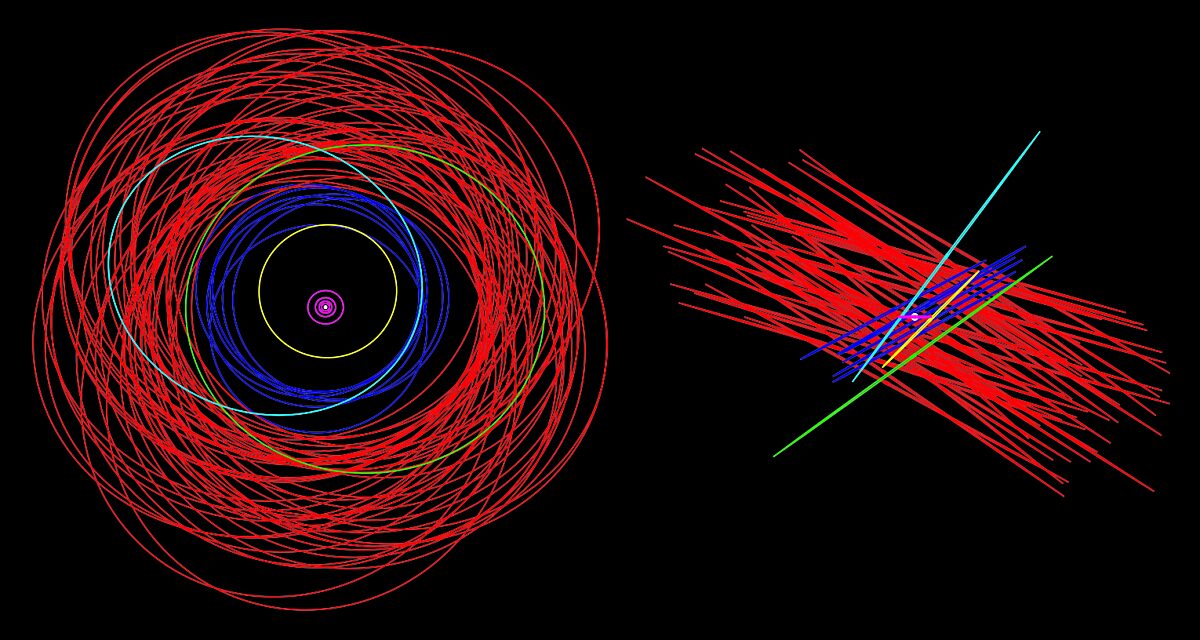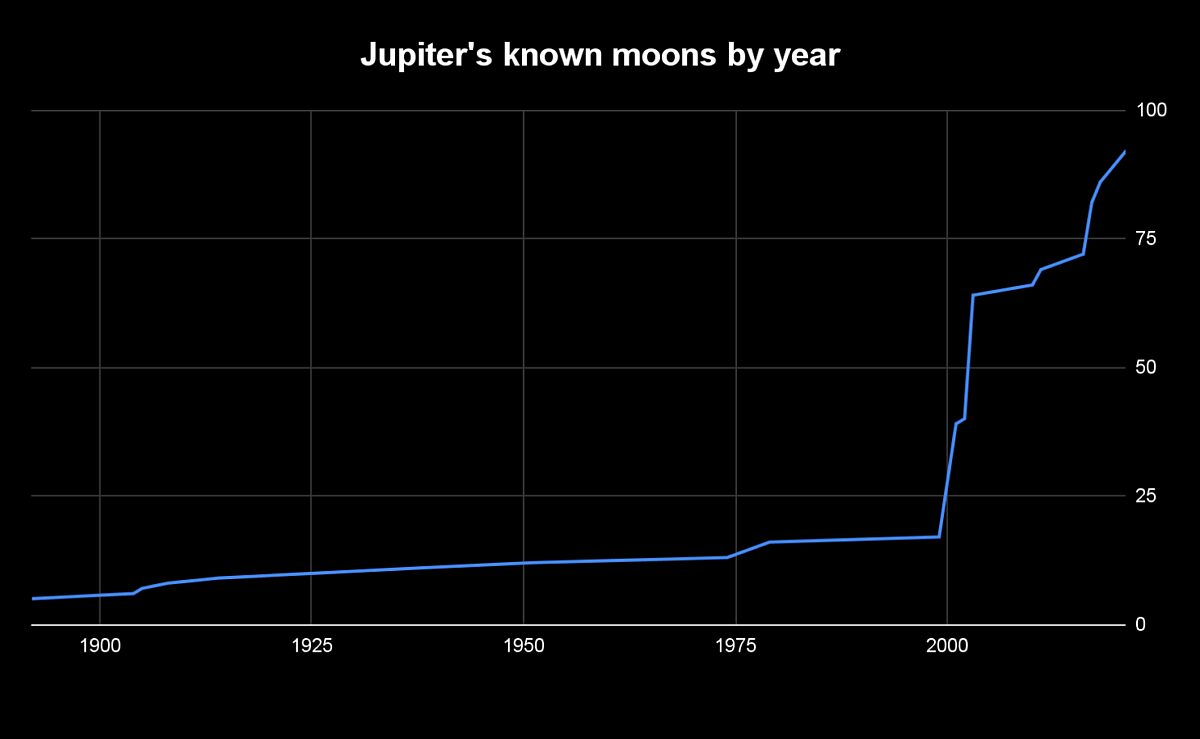Jason Davis • Mar 14, 2023
The secrets of Jupiter’s tiny new moons
Having the most moons in our Solar System isn’t a contest, but if it were, Jupiter would be winning.
The gas giant now has 92 confirmed moons, pulling it ahead of Saturn, which has 83 known moons. Jupiter’s latest batch of 12 moons were validated in December 2022 by the International Astronomical Union’s Minor Planet Center, the global chronicler of Solar System worlds.
But the moon race is far from over. Both Jupiter and Saturn have more candidate moons awaiting final confirmation. Hunting these tiny worlds and confirming their orbits takes time. There’s more than just bragging rights at stake: Outer planet moons have much to teach us about how the giant planets formed, and what conditions were like in the Solar System’s early days.

Meet Jupiter’s new moons
Jupiter’s new moons are not as large and flashy as the Galilean moons Io, Europa, Ganymede, and Callisto. They are instead members of the planet’s irregular satellites — comparatively small outer moons with distant, atypical orbits. Some are no wider than a kilometer.
Jupiter’s outer moons fall into two categories: prograde moons, which orbit closer to Jupiter and in the same direction as the planet’s rotation, and retrograde moons, which orbit farther from Jupiter and in the opposite direction as the planet’s rotation.
Most of these outer moons formed from collisions that chipped small fragments off of larger parent moons in the same orbit. The parent bodies of the prograde moons likely formed in place with Jupiter. That means they may contain the recipe of elements that formed the gas giant billions of years ago.
The parent bodies of the retrograde moons were likely free-flying worlds, possibly from the primitive Kuiper Belt, captured by Jupiter’s gravity long ago. That means they could be examples of small worlds from the planet’s original neighborhood.
How Jupiter captured these moons is a mystery. Just like a spacecraft approaching a planet, a moon must slow down to enter orbit. While a spacecraft uses thrusters, small moons entering Jupiter’s orbit could have relied on timely encounters with an ice giant or drag from gas left over from the planet’s formation.

Right location, right time
The scientists that found the 12 new moons of Jupiter weren’t looking for them at all, in a manner of speaking.
Scott Sheppard, a faculty member at the Carnegie Institution for Science, Earth and Planets Laboratory in Washington, D.C., is part of a team looking for dwarf planets beyond Pluto. The search was conducted using the Subaru Telescope on Maunakea, Hawaiʻi, and the Víctor M. Blanco Telescope at the Cerro Tololo Inter-American Observatory in Chile. These powerful telescopes have instruments that allow them to survey the sky relatively quickly, looking for dim specks moving in the darkness.
Occasionally, the portion of sky being surveyed crosses paths with Jupiter or Saturn. When that happens, the team aims for the region of space right next to the planet, to see if they can pick up any bonus moons.
“At some point during the year, the planets will be at the right location at the right time,” said Sheppard.
A new point of light moving near Jupiter does not automatically get awarded moon status. The candidate moon has to be re-observed weeks, months, and even years after its initial discovery, until its orbit is known with certainty.
For that, the team turns to the Magellan Telescopes at the Las Campanas Observatory in Chile. But even with a 6.5-meter (21-feet) diameter mirror enlisted for the hunt, tracking small moons next to Jupiter’s glare is a challenge. Some moons disappear until their orbits carry them to a more favorable viewing location.
“But by that time, you might not have a precise enough moon orbit known, and thus are not able to easily find them again,” Sheppard said.
Both Jupiter and Saturn have candidate moons that are discovered and cataloged, but not formally recognized. Only after a year of observations will the Minor Planet Center recognize them, and only objects wider than a kilometer will get names. Sheppard said about half of the new moons are big enough to get names.

An outer moon flyby?
Many scientists would love to get an up-close look at one of Jupiter’s outer moons. Two new spacecraft will arrive at the planet in the coming years: NASA’s Europa Clipper in 2030, and the European Space Agency’s JUICE one year later.
Both spacecraft must be injected into precise orbits that will allow them to study Jupiter’s inner moons. The only opportunity to visit an outer moon could come as the probes enter the system.
Bonnie Buratti, the deputy project scientist for Europa Clipper, said that her team was conducting an analysis to see if Clipper’s inbound trajectory could be nudged to send it past an outer moon. So far, they have not found a flyby opportunity closer than a million kilometers (620,000 miles) — more than twice the distance between the Earth and the Moon.
“I doubt we will get close to any of them, or even be able to “see” them with any instrument,” she said. “The problem is: To get closer, we would have to expend precious spacecraft fuel and redesign the tour. Would that be worth the time, money, and resources, and having to give up one or more Europa flybys? Unlikely.”
The JUICE team performed a similar analysis two years ago and could not find a flyby opportunity, said Olivier Witasse, head of ESA's Solar System section. The team is reconsidering that assessment following the discovery of the new moons, and adjustments to JUICE’s trajectory.
"With the discovery of new moons, the new trajectory and the assessment of the launch performances, we will redo the analysis after launch to check the situation," he said. "If we find a good opportunity and we have enough propellant, we may take the decision to do it."
In the meantime, outer moon work will stay in the realm of telescopes. In addition to searching for moons at Jupiter and Saturn, Sheppard said his team also has a separate project looking for new moons around Uranus and Neptune.
“We just sit on those planets for long periods of time to try and find very faint things,” he said. “So that's something that we're working on right now.”
All four of the outer planets likely have more moons awaiting discovery. Just like the early Solar System, each planet’s number of moons is dynamic and subject to change.
Support our core enterprises
Your support powers our mission to explore worlds, find life, and defend Earth. You make all the difference when you make a gift. Give today!
Donate

 Explore Worlds
Explore Worlds Find Life
Find Life Defend Earth
Defend Earth

